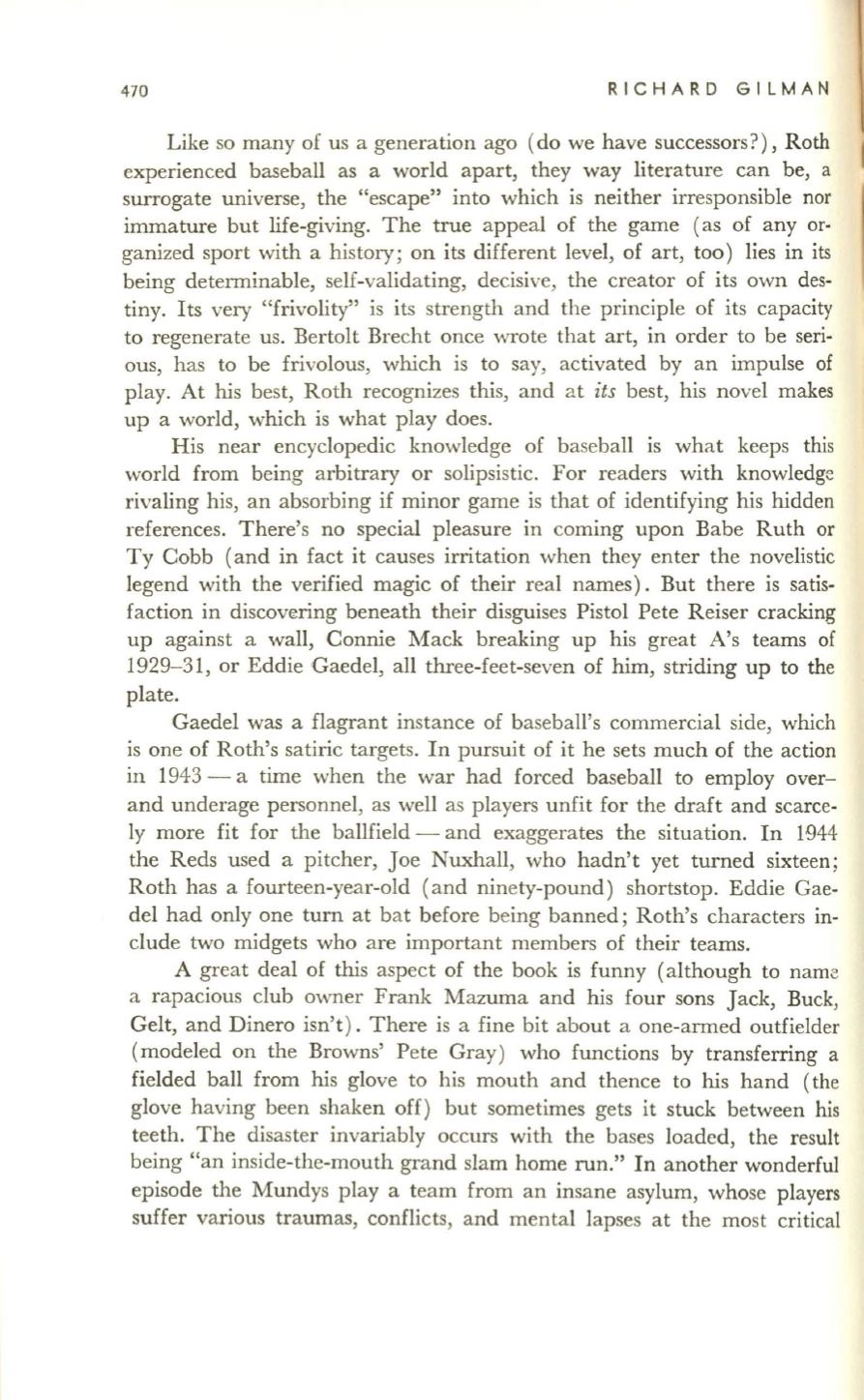
470
RICHARD GILMAN
Like so many of us a generation ago (do we have successors?), Roth
experienced baseball as a world apart, they way literature can be, a
surrogate universe, the "escape" into which is neither irresponsible nor
immature but life-giving. The true appeal of the game (as of any or–
ganized sport with a history; on its different level, of art, too) lies in its
being determinable, self-validating, decisive, the creator of its own des–
tiny. Its very "frivolity" is its strength and the principle of its capacity
to regenerate us. Bertolt Brecht once wrote that art, in order to be seri–
ous, has to be frivolous, which is to say, activated by an impulse of
play. At his best, Roth recognizes this, and at
its
best, his novel makes
up a world, which is what play does.
His near encyclopedic knowledge of baseball is what keeps this
world from being arbitrary or solipsistic. For readers with knowledge
rivaling his, an absorbing if minor game is that of identifying his hidden
references. There's no special pleasure in coming upon Babe Ruth or
Ty Cobb (and in fact it causes irritation when they enter the novelistic
legend with the verified magic of their real names). But there is satis–
faction in discov€ring beneath their disguises Pistol Pete Reiser cracking
up against a wall, Connie Mack breaking up his great A's teams of
1929-31, or Eddie Gaedel, all three-feet-seven of him, striding up to the
plate.
Gaedel was a flagrant instance of baseball's commercial side, which
is one of Roth's satiric targets. In pursuit of it he sets much of the action
in 1943 - a time when the war had forced baseball to employ over–
and underage personnel, as well as players unfit for the draft and scarce–
ly more fit for the ballfield - and exaggerates the situation. In 1944
the Reds used a pitcher, Joe Nuxhall, who hadn't yet turned sixteen;
Roth has a fourteen-year-old (and ninety-pound) shortstop. Eddie Gae–
del had only one turn at bat before being banned; Roth's characters in–
clude two midgets who are important members of their teams.
A great deal of this aspect of the book is funny (although to name
a rapacious club owner Frank Mazuma and his four sons Jack, Buck,
Celt,
and Dinero isn't). There is a fine bit about a one-armed outfielder
(modeled on the Browns' Pete Gray) who functions by transferring a
fielded ball from his glove to his mouth and thence to his hand (the
glove having been shaken off) but sometimes gets it stuck between his
teeth. The disaster invariably occurs with the bases loaded, the result
being "an inside-the-mouth grand slam home run." In another wonderful
episode the Mundys playa team from an insane asylum, whose players
suffer various traumas, conflicts, and mental lapses at the most critical


